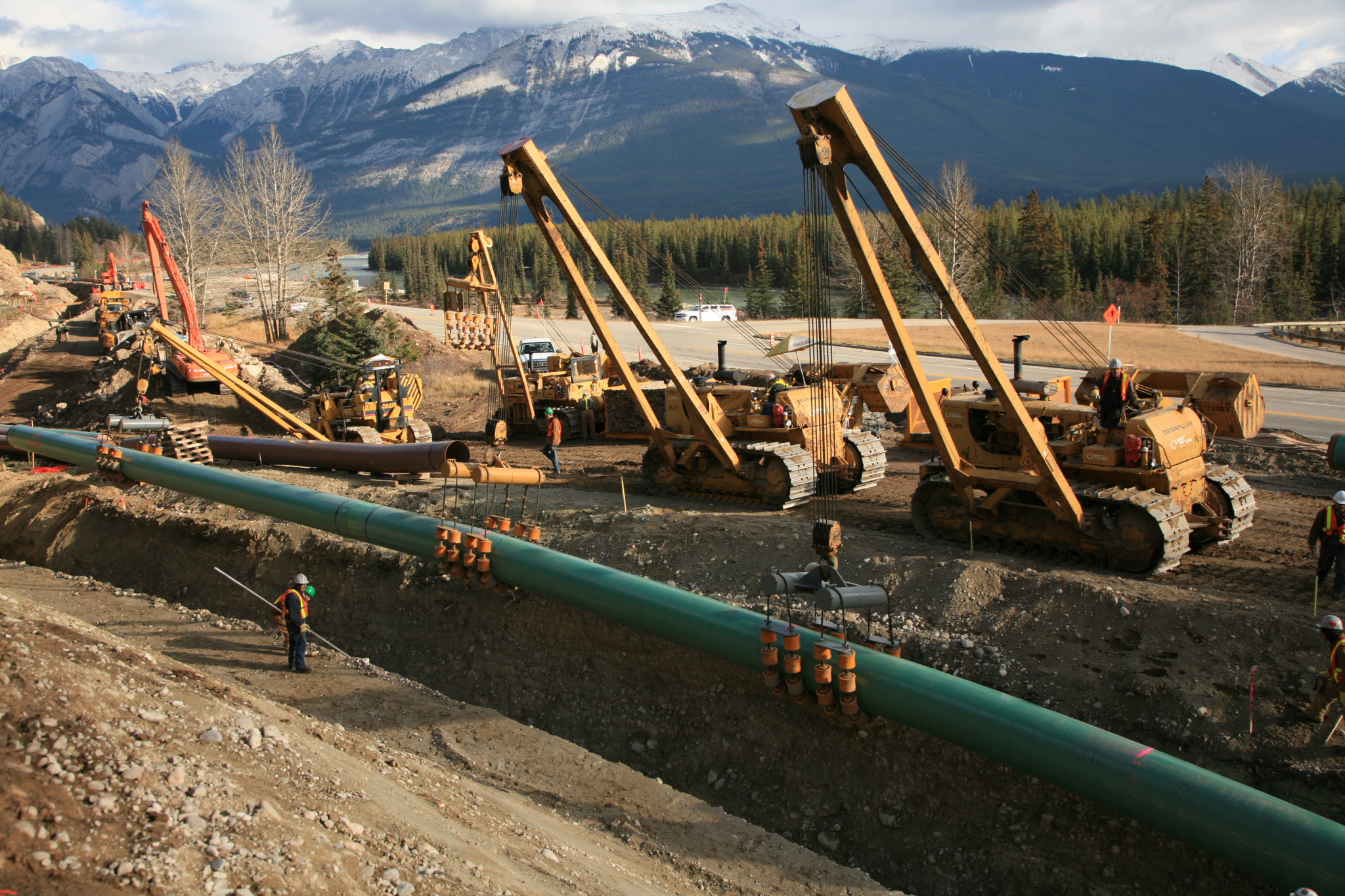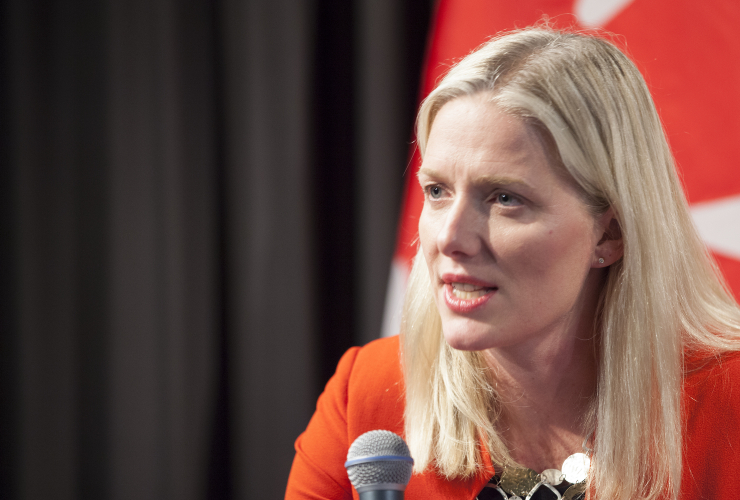Adam Scott believes the oil and gas industry is misleading Canadians. Scott has been scrutinizing the oil industry's numbers for years, previously at Environmental Defence Canada and now with Oil Change International as their senior campaigner. He disputes industry's claim that Canada needs more pipelines.
The industry says Canada needs greater pipeline capacity from the likes of the Trans Mountain expansion and Energy East. But Scott believes the problem isn’t a lack of pipelines, it’s an “over-dependence on an industry that has to decline.”
“These pipelines wouldn’t be needed unless there’s a massive expansion of tar sands that is allowed to continue right up to 2030. Once the pipelines are built, there’s a huge incentive to continue filling them and allowing that expansion,” Scott said.
“We can’t continue expanding oil production in the midst of a climate crisis.”
A new report from Oil Change International finds that Canada has more than enough pipeline capacity to satisfy the country’s oil production and claims the industry is actively misleading Canadians.
According to the Canadian Association of Petroleum Producers' crude oil forecast for 2016, Canada's oil sands output will grow by 850,000 barrels per day between now and 2021 and by another 700,000 between 2021 and 2030 — which will require new transportation infrastructure.
But, if Canada is going to meet its commitment to reduce greenhouse gas emissions 30 per cent below 2005 levels by the year 2030, Oil Change International says that new pipeline infrastructure can't be built. They say new pipeline projects will lead to a ramp up in oil sands extraction, contravening Canada's commitment to the Paris Agreement.
“This increase in new oil production and the resulting greenhouse gas emissions would come at a time when Canada and countries around the world are obligated to dramatically reduce climate pollution,” the report reads.
But CAPP Vice President Pipeline Regulation Nick Schultz said the report makes multiple mistakes in its assessment — that “U.S. oil comes onto some of these pipelines” and that Oil Change often “double counted” some of their numbers.
Schultz said that Oil Change’s report is “just one more piece of misinformation that people who are adamantly opposed to the production of oil are putting out to confuse people.”

Over CAPPacity?
Oil Change International insists that Canada’s pipeline network can handle all oil output from projects that are currently operational and from those under construction because there is more than 400,000 barrels per day of spare capacity in the pipeline system as of July 2016. Oil Change says the Canadian Association of Petroleum Producers has mis-forecast oil production growth every year since 2012, and that they "continue to forecast an increase in oil sands production of 1.31 million bpd by 2030 from 2015 levels, a 36 per cent increase."
Oil Change also claims CAPP “understates by 530,000 barrels per day the capacity of Alberta’s refineries which can currently absorb 612,000 barrels per day of production domestically.” They say refinery capacity will increase to 660,000 barrels per day when Alberta’s Sturgeon refinery is operational in 2018.
The Oil Change report forecasts that increased oil production might strain pipeline infrastructure in 2018 as new projects come online, but that neither Energy East or Kinder Morgan’s Trans Mountain pipeline projects will help alleviate that pressure since they wouldn’t come online until much later. And as Enbridge’s Mainline pipeline expansions become operational, the strain will ease by 2020.
“In fact, when we used industry data, [we found] that Canada has lots of pipeline capacity for the oil that is being produced and for all of the projects that are also under construction. There’s really no shortage of pipeline capacity in Canada at all,” Scott said.
Schultz said that CAPP is still trying to understand how Canadian governments will implement climate change policies, but that those policies won’t impact the 850,000 barrels of oil that need the Trans Mountain expansion and Enbridge line 3 replacement project.
Schultz claims that Trans Mountain has been in apportionment — when there’s more demand for the use of the system than can be used — since 2010, at a rate of 24 per cent in October. That means only 76 per cent of the oil eligible for movement on Trans Mountain is being transported.
“If we had half a million barrels of capacity on pipelines, that this report is saying exist, and it’s sitting under our nose and we’re too foolish to see it, Trans Mountain wouldn’t have 24 per cent apportionment,” Schultz said.
And Schultz questioned Oil Change' claim that they're overestimating pipeline capacity, asking why members of his organization would want to pay more if they don't need it.
“If there’s way too much capacity out there, we’re the ones paying for it and that’s going to show up in people’s profitability. The logic of what’s being said here really doesn’t hang very well," Schultz said.
Scott's explanation is that the oil industry is trying to “lock in this infrastructure” in order to drive expansion of the oil industry and that they’re “desperate to do that before we all come to our sense and realize none of this can happen if we’re going to take action on climate change.”
Natural Resources Canada told National Observer by email that “analysts estimate an additional one million bpd of export pipeline capacity will be required by 2025 to transport forecast growth in oil production.”
The department said Canada’s pipeline network is currently operating at capacity and that Canadian oil exporters have shipped 80,000 barrels per day by rail because pipeline infrastructure is limited.
“Given anticipated growth in oil production and current pipeline capacity constraints, additional pipeline capacity is required, particularly to access growing exports in the Asia-Pacific. This market demand is evident through the number of major pipeline proposals currently under consideration,” Natural Resources Canada said.
Balancing energy and environment
Erin Flanagan, federal policy director at the Pembina Institute, said that CAPP is “using data to advance a self-serving narrative.” She said that complexity is common in forecasting due to changes in commodity prices that result in different levels of production, but that CAPP has consistently overestimated the need for new pipeline capacity.

Flanagan also said that even if the pipelines get built, it doesn’t mean they’re going to be filled completely since production levels are tied to commodity prices. She said Natural Resources Canada estimates that one million barrels per day of new pipeline capacity is needed by 2025 means “they’re obviously looking at significant expansion in the sector.”
“It’s important that we think about upstream greenhouse gas emissions to recognize that we don’t know what commodity prices are going to do. That has a huge impact on rates of production, which means there’s a huge impact on GHGs,” Flanagan said.
“This conversation about expansion of fossil fuels needs to be reconciled with that obligation that we have committed to at the UN. Which means that we need to be focused on reducing emissions, not expanding them.”
The Liberal government announced federal regulations for carbon pricing, saying each province must install a carbon price of $10 per tonne of CO2 at minimum by 2018. That price would rise to $50 per tonne by 2022. The federal government said it will implement a nationwide carbon price if the provinces refuse to implement their own.







Comments